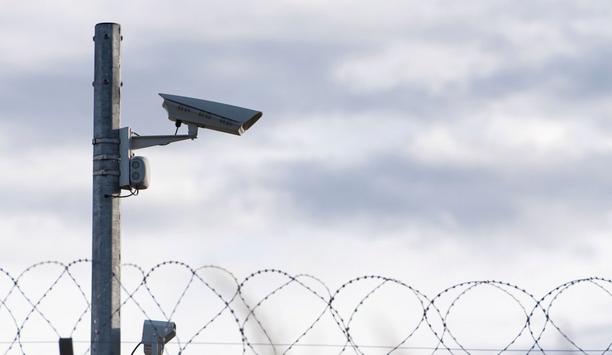To reduce costs, many organisations are switching to converge IP networks to transport both data and voice. Some early adopters are now adding CCTV feeds to these converged networks but are running into problems. Mike Lewis, UK & Eire Country Manager for MOBOTIX believes that a move to an "intelligent" distributed CCTV architecture will help solve the growing network bandwidth
| An intelligent distributed CCTV solution provides a low network load |
bottleneck.
Network managers have always been concerned with bandwidth over-utilisation on their networks, but the recent arrival of bandwidth hogs such as peer-to-peer file sharing and social networking sites have prompted many to add additional restrictions. As IP CCTV streams add to the network burden, many are now looking at installing systems that are more bandwidth-efficient. As an IP device, an IP camera will have an effect on the bandwidth of a network - the challenge for many users is to try to reduce this effect to a minimum. One method is to use a distributed CCTV architecture that places more intelligence within the camera and less strain on the network.
Problems with centralised video management
In this distributed architecture, all image processing, recording logic and decisions are made in the camera itself. This is in complete contrast to most other CCTV systems, where the camera typically has no real intelligence and relies on decision-making and image processing taking place at 'the core‘ of the network via centralised software or DVR.
As an IP device, an IP camera will have an effect on the bandwidth of a network - the challenge for many users is to try to reduce this effect to a minimum |
For example, in video motion recording, recordings will be made only when movement occurs in certain areas. An intelligent distributed CCTV solution will send images only when it needs to record them to its storage device. In contrast a traditional 'dumb‘ centralised system will be constantly sending images to the central location so that the software can make the decision to store it or disregard it. This means that there is always a network overhead, even when there is no movement.
IP network efficiency
The efficiency of the CODEC is essential in designing a good distributed architecture. For example, the MxPEG CODEC is designed to efficiently transport ultra-high resolution images up to 3.1 mega pixels with little loss in quality or latency whilst keeping the network bandwidth as low possible, typically between 1Mb/s and 3 Mb/s. Both of these factors make an intelligent distributed CCTV architecture the obvious choice of Network Managers struggling to fix problems caused by the sudden disappearance of their network bandwidth. A move to distributed IP CCTV helps alleviate the poor performance of other network dependent applications such as such as Voice over IP, thin client connections and other client server applications.
| The efficiency of the CODEC is essential in designing a good distributed architecture |
Therefore it is important when choosing a CCTV system that it can co-exist with existing IP systems on the network. Consideration must also be given to more factors than simply the amount of Mb/s that will be required. It is also important to understand how regularly the cameras will be using the network, and systems that use bandwidth when not necessary should be avoided. Unfortunately, this scenario represents most systems being installed today.
As organisations strive to reduce costs by adding CCTV streams to their converged voice and data networks, distributed architectures also play an important role in reducing centralised processing and storage costs. The combination of intelligence and storage within each camera and highly efficient encoding and network transportation requires less resource dedicated to central control centres.
Where a typical CCTV solution would normally require one DVR or PC per four cameras to manage high-resolution images, a distributed solution will run far more cameras from a single resource. As all the image processing occurs inside the camera, Distributed CCTV systems are capable of recording up to 40 high-resolution cameras simultaneously to 1 PC.
As CCTV streams increasingly move onto the IP network, security and IT managers will need to seriously consider a distributed architecture to help networks cope with the demands of higher quality video.

Mike Lewis
UK & Eire Country Manager
Mobotix




















